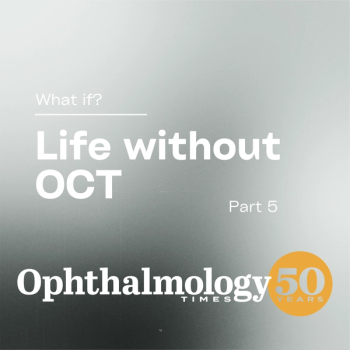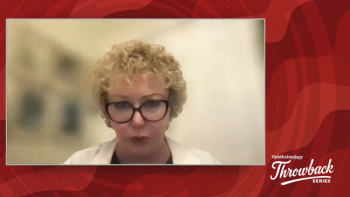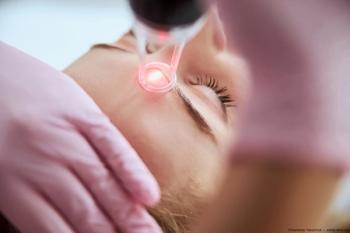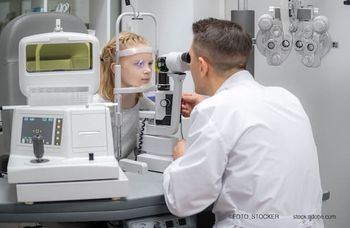
The ‘Holy Grail’ of emmetropia
Advances in intraoperative aberrometry are increasing the likelihood that, in the near future, ophthalmologists will be able to achieve emmetropia for all patients undergoing cataract surgery.
Take-home
Advances in intraoperative aberrometry are increasing the likelihood that, in the near future, ophthalmologists will be able to achieve emmetropia for all patients undergoing cataract surgery.
Dr. OsherCataract Corner By Robert H. Osher, MD, Special to Ophthalmology Times
The steady stream of advances in cataract surgery have brought forth significant improvements in surgical techniques, in devices ophthalmologists implant, and in the vast array of tools available for improving modern cataract surgery safety and refractive outcomes.
Examples include newest-generation phacoemulsification, advanced technology IOLs, and the recent development of femtosecond cataract lasers. Each has contributed to the pursuit of our quest for emmetropia after cataract surgery.
We are now entering a new frontier in refractive cataract surgery with intraoperative refractive data being available for the first time to provide surgical guidance, as well as insurance against untoward refractive surprises. Early experience with intraoperative aberrometry has confirmed the clinical value of measuring refraction and providing the surgeon with this information during cataract surgery.
Finally-as the numbers of cataract patients that have previously undergone refractive cornea surgery increases-the challenge of obtaining accurate keratometry increases along with the associated risk of it confounding the preoperative surgical plan.
Thankfully, intraoperative aberrometry is progressing alongside other cataract surgery advances-increasing the likelihood that, in the near future, we will be able to achieve emmetropia for all cataract surgical patients.
Developments in aberrometry
In the 1960s, Roland Shack and Benn Platt modified the aperture array developed by Johannes Franz Hartmann in 1900 to trace individual rays of light through the optical system of a large telescope. The Shack-Hartmann wavefront sensor revolutionized the accurate measurement of lower and higher order aberrations and is one of the most common forms of aberrometry in the market today.
As cataract surgery reaches new levels of success and safety, the potential need and value for a means of measuring aberrometry intraoperatively has become increasingly apparent.
Unfortunately, legacy aberrometer technologies, such as Shack-Hartmann systems, have not been able to support this application because of their bulky size. The technology is not compact enough to fit on an operating microscope and meet the ergonomic requirements of cataract surgery.
In 2010, WaveTec Vision overcame this critical deficiency by creating an intraoperative aberrometer using Talbot-Moire interferometry, which allows a somewhat smaller, less-cumbersome profile.
At the forefront
A new intraoperative device (HOLOS IntraOp, Clarity Medical Systems) will be released at the 2013 meeting of the American Academy of Ophthalmology (AAO) in New Orleans that moves beyond these legacy technologies with a next-generation form of wavefront technology.
The device-even more compact-uses a proprietary sequential scanning technology invented specifically for ophthalmic applications. The device provides a continuous stream of highly accurate refractive data that moves from a still camera (legacy technology) to a video camera overlaid on a live image of the patient’s eye.
The manufacturer has recently secured patents on the ability to capture and display real-time refractive wavefront measurements during surgery.
The aberrometer attaches to any standard surgical microscope, and can adapt to a 150-, 175-, or 200-mm working distance-another unique feature for which the manufacturer has secured a patent.
A separate screen positioned conveniently for the surgeon’s viewing displays continuous video of the data being captured.
The device is accurate in phakic, aphakic, and pseudophakic states, and is safe to keep running throughout the entire procedure-allowing the surgeon to glance up as needed at any point in the surgery to assess the refractive information.
This all occurs without having to adjust either the microscope or the operating room lights, or interact with the device’s touchscreen.
The measurement range spans 40 D.
Clinical applications
Real-time wavefront information has the potential to impact cataract surgery in a number of positive ways.
The technology’s continuous, real-time aberrometer provides seamless, accurate refractive data to the surgeon throughout the surgery without adding to the surgical time. This is accomplished by capturing a live video of the eye while overlaying streaming qualitative and quantitative refractive data.
These data are also recorded for detailed review after the case.
During surgery, the device helps the surgeon actively manage astigmatism.
For example, the device can be used to guide the orientation of a toric lens to its optimal refractive position in real time (note that the astigmatic power may be minimized or eliminated at an axis that is different from the pre-operative calculated axis).
The device can also be deployed to titrate a limbal relaxing incision as it is being performed, including with femtosecond laser-management astigmatism.
Additional applications include the assessment and quantification of surgically induced astigmatism.
Post-surgery, vast amounts of information can be mined from the integrated video and refractive movie, increasing understanding of surgical influences on final refractive outcomes.
Getting the best readings
As we embark on the journey of intraoperative aberrometry, the key elements needed to get the most value from our new tools will be explored.
The importance of physiologic IOP in achieving the accurate measurements will be one important key to success. During aphakia, it is necessary for the globe to be well inflated.
Pseudophakia is the second condition when control of pressure is important to achieve accurate refractive measures.
Achievement of physiologic IOP is important, since it is the biggest variable impacting effective lens position.
The device’s continuous real-time refraction allows the surgeon to adjust IOP while monitoring the refractive results.
New hope
For most of my 35-year career in ophthalmology, I have been preaching the official “school of emmetropia,” trying to convince my peers that emmetropia should be our end goal.
I presented and published the first papers emphasizing the goal of uncorrected vision. In the early 1980s, I performed the first refractive cataract surgery combining astigmatic keratometry with phacoemulsification to reduce astigmatism. Several years later, I performed the first hyperopic clear lensectomy in pursuit of the evasive emmetropia.
The value of real-time, scanning, continuous wavefront aberrometry is indisputable. Imagine the possibility of no longer depending entirely upon preoperative measurements, subject to operator error, in obtaining axial length and keratometry.
Certainly, much must be proven before ophthalmologists are completely accurate in selecting the ideal IOL power, placing it exactly on axis, and achieving zero residual astigmatism. I believe there is new evidence for hope that we are closing in on this desirable destination.
Robert H. Osher, MD, is professor of ophthalmology, College of Medicine, University of Cincinnati and medical director emeritus, Cincinnati Eye Institute, Cincinnati, OH. He did not indicate any proprietary interest. Readers may contact Dr. Osher at
Newsletter
Don’t miss out—get Ophthalmology Times updates on the latest clinical advancements and expert interviews, straight to your inbox.



















































.png)


